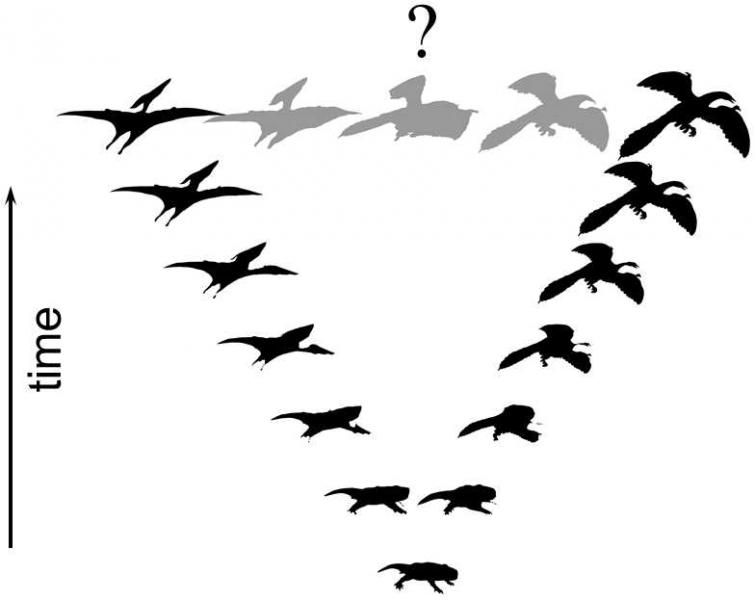XXVII.1.8 The paleontological record allegedly lacks links between the various taxa of organisms
A number of “missing” intermediate links exhibiting the traits of two distinct extant taxa have already been found.However, an even greater number never existed at all and thus there is no point in being surprised by their absence in the paleontological record (Fig. XXVII.2).In a great many cases, the common ancestor of the two taxa lacked all the traits that are characteristic for modern members of these taxa, so that the link between the taxa cannot be recognized on the basis of its phenotype.The relevant characteristic traits developed in each taxon only gradually over an extremely long period of time.

Fig. XXVII.2 “Missing” links. The scheme illustrates the main reasons for the absence of links between the individual higher taxa. These links mostly did not even exist, as the closest common ancestor of the two taxa did not exhibit even the slightest indication of the characteristic traits of the particular taxa. Even if such an ancestor is found in the paleontological record, it will not exhibit a mixture of the apomorphic traits (evolutionary innovations) characteristic for contemporary taxa but, at the very most, a mixture of the relevant plesiomorphic (evolutionarily primitive) traits.
The situation encountered in the search for links between the individual related species, e.g. within a single genus, is somewhat different and far more interesting.The absence of transition phenotype forms between the parent and daughter species is very remarkable in a great many species of organisms.This fact is reflected in the paleontological record in that a certain species has the same phenotype throughout its existence and then, suddenly and apparently with no transitory forms, a species with a different phenotype emerges next to it and then accompanies the original species in the paleontological record, or replaces it.The new species then also does not change throughout its existence.This situation is described by the theory of punctuated equilibriums (see XXVI.5.1).The punctuated character of the evolution of species is frequently contrasted with the apparently generally anticipated character following from Darwin’s theory of evolution.
To begin with, it is necessary to explain what the paleontologist means by suddenly replace.This generally occurs in a time period of the order of tens of thousands of years which, from the viewpoint of the duration of the existence of a species (several million years) is a short period of time, but is sufficiently long for the formation of a new species by Darwinian mechanisms.It should further be pointed out what is the usual population mechanism of the formation of a new species according to current evolutionary concepts.This involves the mechanism of allopatric speciation, i.e. speciation that occurs in a geographic area away from contact with the original species.In fact, this very frequently involves peripatric speciation, i.e. the formation of a new species in a small, separate population.A great many such populations are formed during the existence of a species; however, they mostly last only a short time and, after some time, disappear or merge with the original population.The probability that gradual phenotype changes will occur in one of these small split-off populations is, for a great many reasons, substantially greater than the probability that it will occur in the large parent population (XXI.3.1).Simultaneously, there is negligible chance of encountering such a population in the paleontological record.Thus, the sudden appearance of a new species in the paleontological record is thus actually a result of the invasion of an already existing species into a new territory and not of its instantaneous emergence at the particular location.The relative lack of paleontological records for the slow development of one species from another species is thus a quite logical consequence of the character of long-known evolutionary processes and certainly does not constitute an argument against the validity of the modern the theory of evolution.s
